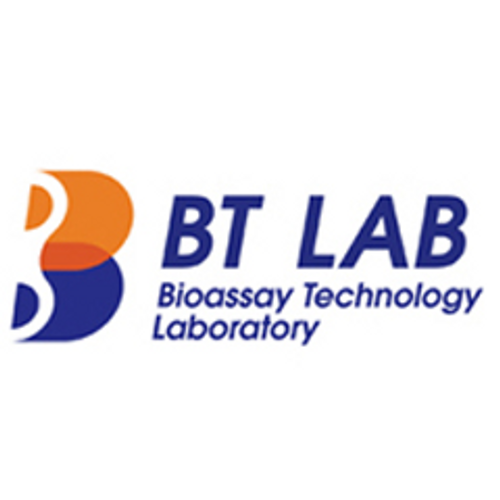Product Description
Human ReverseTri-iodothyronine (RT3) ELISA Kit | KTE60780 | Abbkine
Application: This Human ReverseTri-iodothyronine (RT3) ELISA Kit employs a two-site sandwich ELISA to quantitate RT3 in samples. An antibody specific for RT3 has been pre-coated onto a microplate. Standards and samples are pipetted into the wells and anyRT3 present is bound by the immobilized antibody. After removing any unbound substances, a biotin-conjugated antibody specific for RT3 is added to the wells. After washing, Streptavidin conjugated Horseradish Peroxidase (HRP) is added to the wells. Following a wash to remove any unbound avidin-enzyme reagent, a substrate solution is added to the wells and color develops in proportion to the amount of RT3 bound in the initial step. The color development is stopped and the intensity of the color is measured.
Detection Method: Colorimetric
Conjugate: N/A
Sample Type: Cell culture supernatants#Serum#Plasma#Other biological fluids
Assay Type: Multiple steps standard sandwich ELISA assay with a working time of 3-5 hours. It depends on the experience of the operation person.
Kit Component: • Human ReverseTri-iodothyronine microplate
• Human ReverseTri-iodothyronine standard
• Human ReverseTri-iodothyronine detect antibody
• Streptavidin-HRP
• Standard diluent
• Assay buffer
• HRP substrate
• Stop solution
• Wash buffer
• Plate covers
Features & Benefits: Human ReverseTri-iodothyronine (RT3) ELISA Kit has high sensitivity and excellent specificity for detection of Human RT3. No significant cross-reactivity or interference between Human RT3 and analogues was observed.
Calibration Range: Please inquire
Limit Of Detection: Please inquire
Usage Note: • Do not mix components from different kit lots or use reagents beyond the kit expiration date.
• Allow all reagents to warm to room temperature for at least 30 minutes before opening.
• Pre-rinse the pipet tip with reagent, use fresh pipet tips for each sample, standard and reagent to avoid contamination.
• Unused wells must be kept desiccated at 4 °C in the sealed bag provided.
• Mix Thoroughly is very important for the result. It is recommended using low frequency oscillator or slight hand shaking every 10 minutes.
• It is recommended that all samples and standards be assayed in duplicate or triplicate.
Storage Instruction: The unopened kit should be stored at 2 - 8°C. After opening, please store refer to protocols.
Shipping: Gel pack with blue ice.
Precaution The product listed herein is for research use only and is not intended for use in human or clinical diagnosis. Suggested applications of our products are not recommendations to use our products in violation of any patent or as a license. We cannot be responsible for patent infringements or other violations that may occur with the use of this product.
Background: Reverse triiodothyronine is a molecule which is an isomer of triiodothyronine (T3) . It is derived from thyroxine (T4) through the action of deiodinase.rT3, unlike T3, does not stimulate thyroid hormone receptors. However, rT3 nonetheless binds to these receptors, thereby blocking the action of T3. Under stress conditions, the adrenal glands produce excess amounts of cortisol. Cortisol inhibits the conversion of T4 to T3, thus shunting T4 conversion from T3 towards rT3. Consequently, there is a widespread shutdown in T3 binding across the body. This condition is termed Reverse T3 Dominance. It results in reduced body temperature, which slows the action of many enzymes, leading to a clinical syndrome, Multiple Enzyme Dysfunction, which produces the effects seen in hypothyroidism. Effects include fatigue, headache, migraine, PMS, irritability, fluid retention, anxiety and panic.
Alternative Names: RT3
Search name: RT3
Tag: RT3
 Euro
Euro
 USD
USD
 British Pound
British Pound
 NULL
NULL












